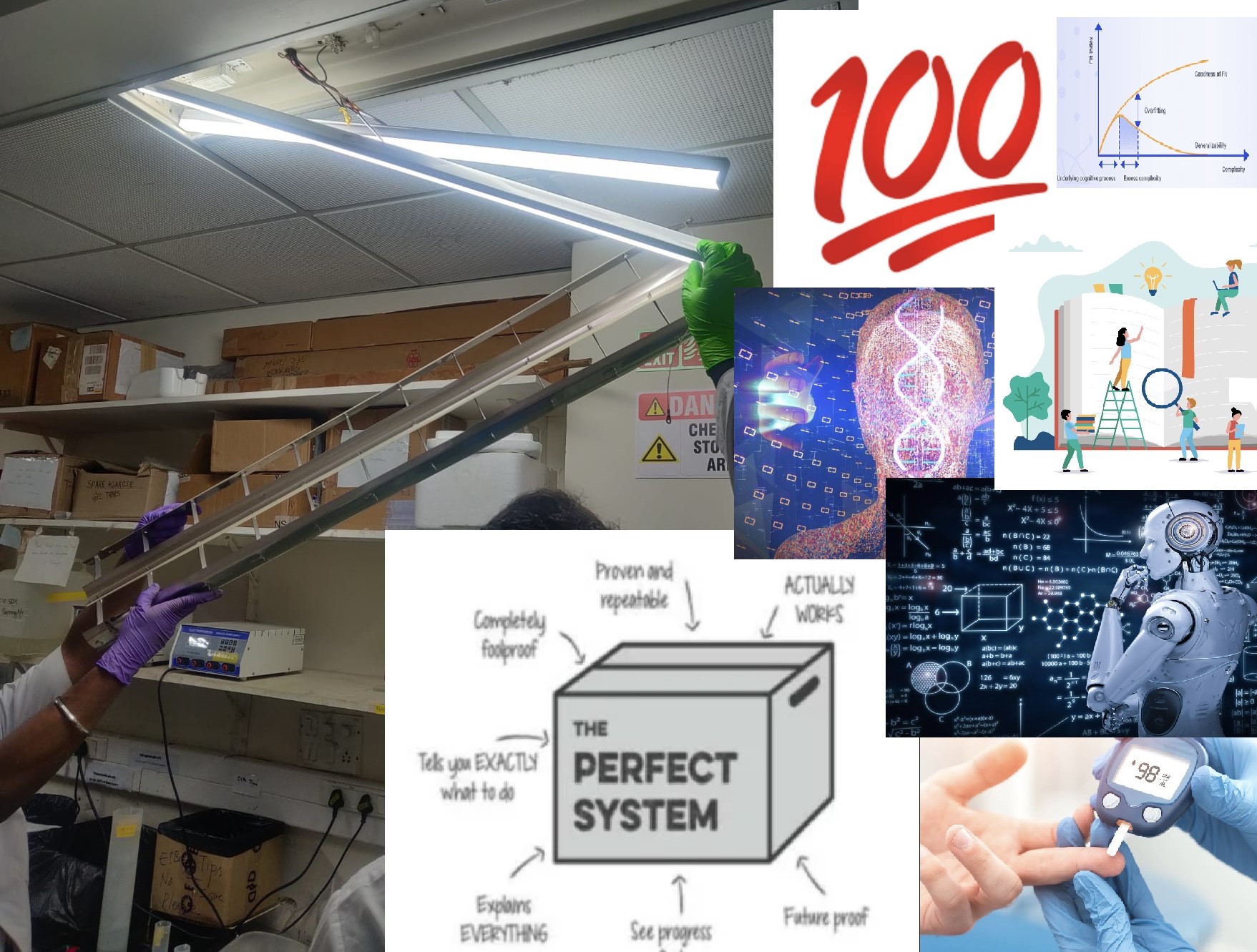The perfect system
Posted on July 3, 2022 • 5 minutes • 857 words
A few days back a ceiling light setup in our lab fell down and thankfully there were no injuries. A few of us ran there to see if we can fix it back. We looked at another setup to see how it must be, and we fixed the light. This seemingly insignificant incident gave me so many insights into how mankind has been learning and evolving. Welcome back, dear readers. Today I shall explore the concept that has led to countless wars, and environmental hazards which is also the concept that led to innovation and medicine. It is the concept that created science. I shall explore learning.
In our journey from hunter-gatherers to money gatherers, we have seen several phases. To ease the process of hunting, we learnt to make stone tools. We then learnt to domesticate wildlife, cultivate plants, establish territories, and explore art. All of this, only to ease ourselves. As Plato once said, “our need will be the real creator”. Every time there was a necessity, we invented something to ease our trouble. Trouble is what drives learning. When the ceiling light fell, that’s when we knew it would cause trouble if someone stood below it. I never bothered about how and where the light was until I sensed a threat from its fall. We might also find fields of exploration that do not seem to have their origin in trouble. But look closely, and you will find a beautiful mind behind those discoveries. A beautiful mind trying to jump away from troubles or troubled to uncover the truth. Research in biology is no exception. Pick up any academic paper and the introduction of the paper must talk about how the research would help solve the trouble.
Establishing that necessity drives learning, let us explore the process of learning.
Often in the process of learning, we move from previously established knowledge to derive new knowledge. Based on the previously established knowledge, a hypothesis is generated and if our observations correlate to the hypothesis, we form a theory that could change the world. With prior knowledge that Penicillium moulds killed bacteria, Alexander Fleming extracted penicillin to lead us into the antibiotic era. It is knowledge that gives rise to new knowledge. In the process of generation of new knowledge, we take the aid of existing knowledge. In the ceiling light story, we looked at another ceiling light to see how it is fixed. Though we could intuitively figure it out, we looked at a reference.
A reference is the basis of a learning process. In machine learning, we give the machine a reference and ask it to learn from it. If the reference does not truly reflect the real-world scenario, all the training given to the machine goes in vain. If the ceiling light was fixed looking at another defective set-up, the light is bound to fall. Biological research always takes this risk of reference. We intend to find problems for human diseases and we search for them in model organisms like mice. This is where I introduce my blogpost title. The perfect system.
When we intend to draw statistical conclusions, we use a concept called goodness of fit. Here, we establish a perfect system and see if our experimental observations fit correctly with the perfect system. If it does fit, your story is true. This might sound weird because of the fact that it is we who assume a perfect system and see if reality is perfect or not. Perfection is indeed relative and might not denote the truth. So, it boils down to what is a perfect system from where we are learning.
In biological research, you come across too many confounding variables that make it difficult to select a good reference. More than half (66%) of the human reference genome comes from only one anonymous man. And so far, we have only 2 reference genomes from 2010. How good is a reference that is based on only a few individuals? Glucose level for diabetes risk is another good example. The arbitrary cut-points selected from measuring “impaired glucose tolerance” and “impaired fasting tolerance” for diabetes is an arguable reference. If considering that glucose levels above the cut point indicate risk for diabetes, both the types of testing fit good with the story. But around half of the people do not meet both criteria. In simple terms, When A leads to C and B also leads to C, we expect A and B are causative to C. This is where comes the dilemma of the perfect system.
In the process of our learning, we tend to assume a perfect system and if we are close to the perfect system, we are probably correct. The fact is, we do not know if the perfect system reflects reality and we do not know how many other stories would also be true with your perfect system. But at the end of the day, we need to assume a perfect system to progress forward because nothing is perfect, yet perfection is the only reality. We had to fix the ceiling light irrespective of how perfectly we did it.
